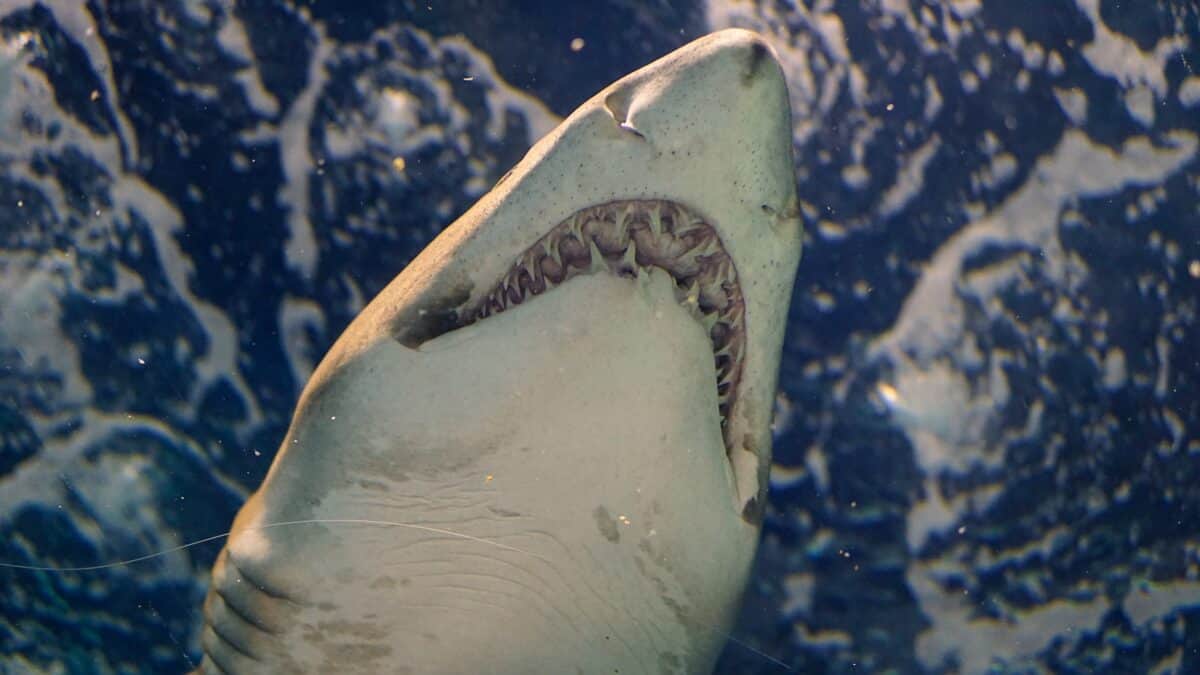The ocean, covering more than 70% of our planet’s surface, harbors some of Earth’s most fascinating intellectual marvels. From problem-solving cephalopods to tool-using mammals, marine environments have fostered remarkable cognitive abilities among their inhabitants. Intelligence in the animal kingdom manifests in various forms – social complexity, problem-solving capacity, tool usage, adaptability, and even self-awareness. The underwater world presents unique evolutionary pressures that have shaped different types of intelligence, often in ways that challenge our terrestrial understanding of cognition. In this exploration of the 17 most intelligent marine creatures, we’ll dive deep into the remarkable mental capabilities that have evolved beneath the waves, revealing how these animals perceive, learn, communicate, and adapt to their watery domains.
14. Bottlenose Dolphins The Ocean’s Cognitive Masters

Bottlenose dolphins (Tursiops truncatus) consistently rank among the most intelligent creatures on our planet, marine or otherwise. With brain-to-body mass ratios second only to humans, these cetaceans demonstrate extraordinary cognitive abilities. Research has shown they can recognize themselves in mirrors—a rare trait indicating self-awareness that’s shared by only a handful of species including great apes and elephants. Dolphins can also understand complex instructions, learn sign language, and even create novel behaviors when asked to “do something different,” demonstrating their creativity and comprehension.
Their social intelligence is equally impressive. Bottlenose dolphins maintain complex social networks and can remember specific individuals for decades. They communicate using a sophisticated system of whistles, clicks, and body language, with each dolphin possessing a unique “signature whistle” that functions like a name. Scientists have documented dolphins teaching hunting techniques to their young, collaborating in coordinated hunting strategies, and even using marine sponges as tools to protect their sensitive rostrums while foraging on the seafloor—clear evidence of cultural transmission of knowledge through generations.
13. Octopuses Eight-Armed Problem Solvers
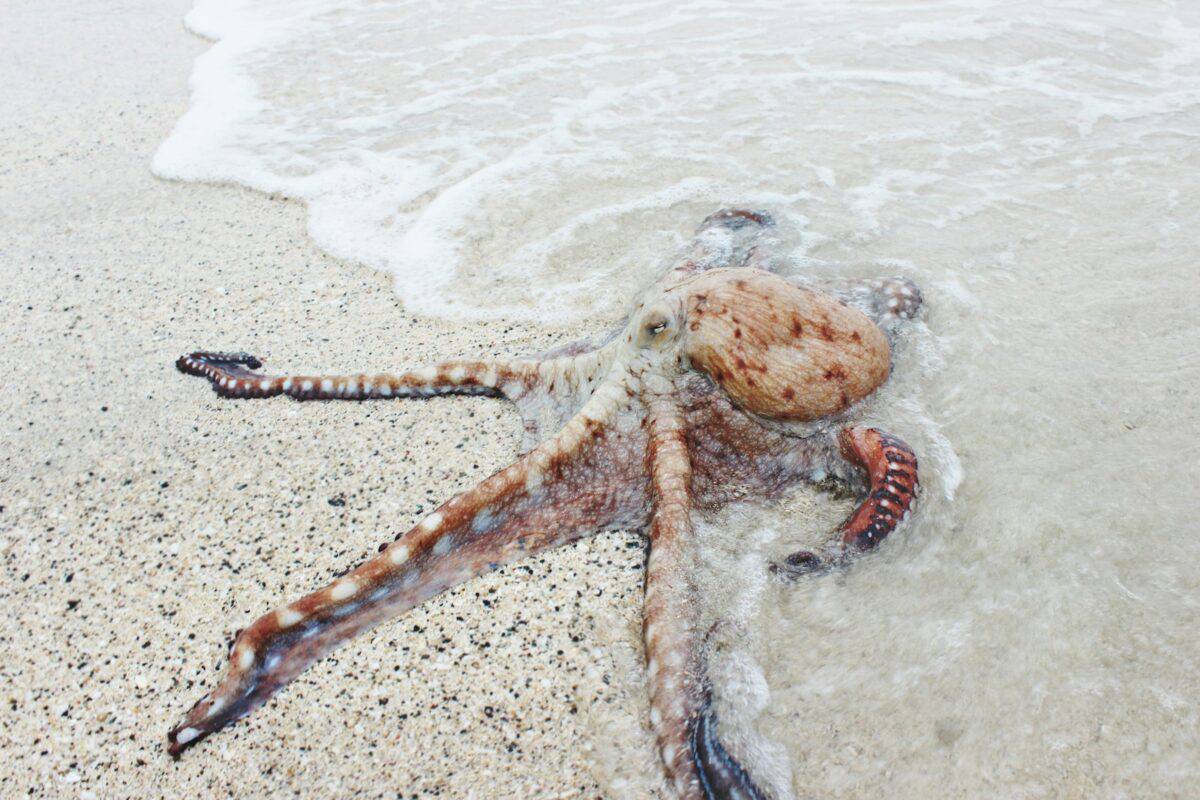
Octopuses represent one of evolution’s most remarkable experiments in intelligence. These cephalopods have taken a dramatically different evolutionary path to cognitive development compared to vertebrates, with a distributed nervous system that places two-thirds of their neurons in their arms. This unique neural architecture allows for both centralized decision-making and semi-autonomous limb function. The common octopus (Octopus vulgaris) can solve complex puzzles, navigate mazes, and open childproof pill bottles—a task that challenges many humans.
Their problem-solving abilities became famous through numerous documented cases of escape artistry. Octopuses have been observed unscrewing jar lids from the inside, squeezing through tiny openings a fraction of their body size, and even traveling across dry floors to reach other tanks. In laboratory settings, they can distinguish between different shapes and patterns and even recognize individual human caretakers. Most remarkably, they demonstrate observational learning—watching and mimicking behaviors they’ve observed—despite their relatively short 1-2 year lifespan that limits their learning opportunities compared to longer-lived intelligent species.
12. Orcas Strategic Hunters with Cultural Sophistication
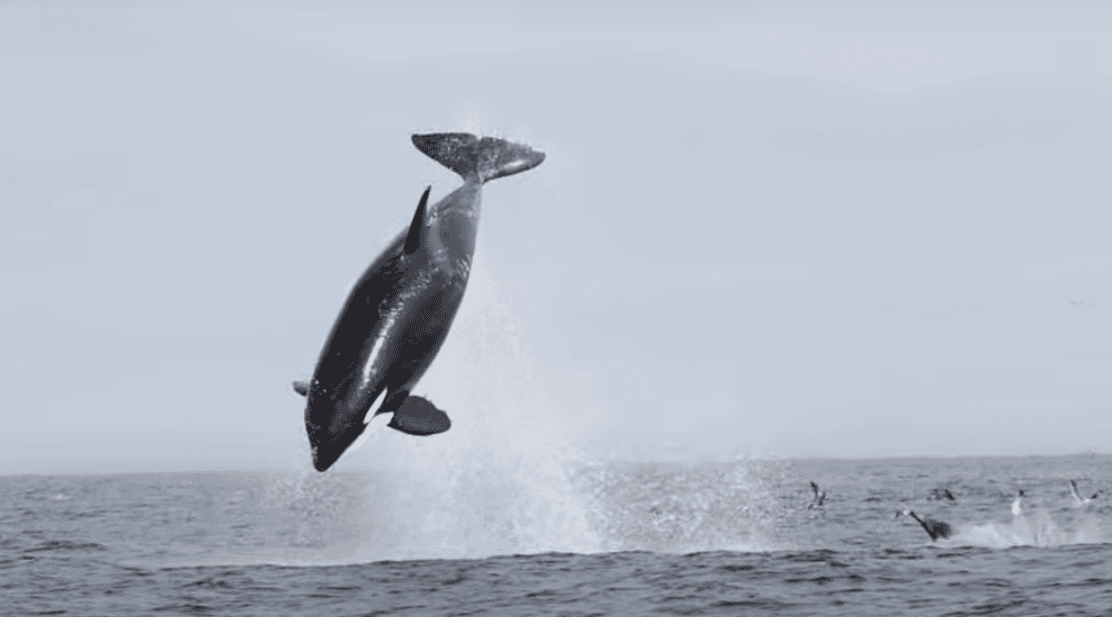
Killer whales or orcas (Orcinus orca) possess the second-largest brain of any marine mammal, weighing up to 15 pounds. These apex predators exhibit extraordinary hunting intelligence, developing distinct hunting strategies tailored to specific prey and environments. Some pods specialize in creating waves to wash seals off ice floes, while others intentionally beach themselves to capture prey before sliding back into deeper water. These hunting techniques are passed down through generations, creating distinct cultural traditions among different orca populations.
The social structures of orca pods demonstrate remarkable complexity, with some populations maintaining lifelong family bonds within matrilineal groups. Different orca communities have developed their own unique vocalizations—essentially dialects—that serve as cultural markers. Scientists have identified at least 10 distinct ecotypes of orcas worldwide, each with specialized diets, behaviors, and social structures. Some evidence suggests they may possess a concept of the future, as they’ve been observed storing live prey for later consumption, indicating planning capabilities that extend beyond immediate needs.
11. Beluga Whales The Canaries of the Sea
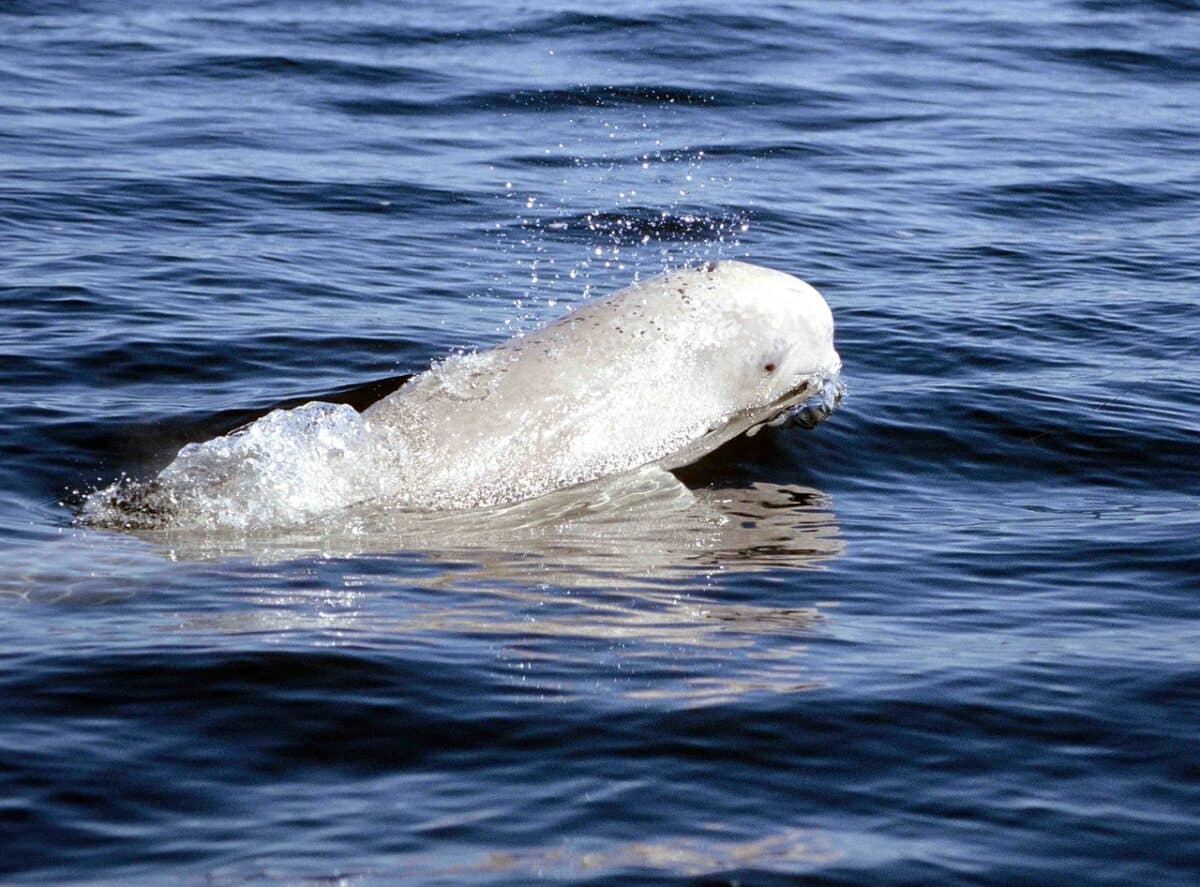
Beluga whales (Delphinapterus leucas) have earned the nickname “sea canaries” due to their extraordinary vocal abilities, producing an extensive repertoire of clicks, whistles, chirps, and calls. Their exceptional vocal mimicry has been documented in both wild and captive settings, with belugas spontaneously imitating human speech patterns and even mechanical sounds. This vocal flexibility indicates advanced auditory processing and learning capabilities that few other species possess.
Beyond their vocal talents, belugas demonstrate sophisticated social intelligence. They maintain complex social structures with strong familial bonds and communicate through an elaborate system of vocalizations and body language. Their highly mobile facial features—unusual among cetaceans—allow for expressive communication. Belugas have been observed working cooperatively to solve problems and showing signs of cultural learning, with different populations developing distinct vocalizations and behaviors. Their bulbous forehead, containing an organ called the melon, allows them to focus sound waves with remarkable precision, essentially functioning as a biological sonar system that they can manipulate with extraordinary control.
10. Humpback Whales Masters of Cultural Innovation

Humpback whales (Megaptera novaeangliae) exhibit one of the most compelling examples of cultural transmission in the animal kingdom. Their famous “bubble-net feeding” technique—where groups coordinate to blow bubbles around schools of fish, creating a natural net before lunging through to feed—represents a sophisticated cooperative hunting strategy transmitted culturally rather than genetically. Different populations have developed variations of this technique, showing regional “cultures” of hunting styles.
Perhaps most remarkable is the humpback whale’s song—complex vocalizations that can last up to 30 minutes and be heard for miles underwater. These songs follow distinct patterns that evolve over time, with all males in a population adopting changes synchronously, demonstrating cultural transmission on a massive scale. Researchers have documented how song patterns can spread across entire ocean basins, with whales in Australia adopting song elements from populations near Indonesia within just a few years. This represents one of the largest-scale examples of cultural transmission in any non-human species and suggests sophisticated social learning mechanisms.
9. Manta Rays Unexpected Intellectual Giants

Manta rays (Manta birostris and Manta alfredi) have the largest brain-to-body ratio of any fish, challenging traditional assumptions about fish intelligence. While they lack the brain structure called the neocortex that mammals use for higher cognitive functions, mantas have developed enlarged and highly developed brain regions associated with learning, problem-solving, and sensory integration. They can navigate complex environments with precision, recognize themselves in mirrors (suggesting self-awareness), and remember specific locations over long periods.
Social intelligence appears to be a key aspect of manta cognition. They maintain complex social networks, engage in cooperative feeding behaviors, and show curiosity toward divers and novel objects. In captivity, mantas have demonstrated the ability to recognize individual human handlers and modify their behavior based on specific circumstances. Researchers studying wild populations have observed manta rays returning to the same cleaning stations repeatedly over years, suggesting they maintain detailed cognitive maps and long-term memory. Their intelligence is particularly remarkable given that they represent an entirely different evolutionary pathway to complex cognition than mammals or cephalopods.
8. Sea Lions Adaptable Maritime Learners

California sea lions (Zalophus californianus) demonstrate exceptional learning abilities and cognitive flexibility. They can understand complex sequential tasks, abstract concepts, and even rudimentary symbolic language. In experimental settings, sea lions have shown the ability to classify objects into categories (such as “fish” versus “non-fish”) and understand transitive relationships (if A > B and B > C, then A > C)—a form of logical reasoning once thought unique to primates and a few other mammals.
Their capacity for imitation is particularly impressive. Sea lions can observe and reproduce novel behaviors demonstrated by humans or other sea lions, even when these behaviors are unnatural to their species. This ability indicates sophisticated social learning mechanisms. In the wild, they navigate complex social hierarchies and adapt quickly to changing environmental conditions. Their remarkable memory allows them to recall specific locations, individuals, and learned behaviors for years. Even more impressively, they can understand human pointing gestures and eye gaze as communicative cues—an ability shared with dogs but rare among non-domesticated animals.
7. Harbor Seals Acoustic Intellects

Harbor seals (Phoca vitulina) possess exceptional cognitive abilities centered around acoustic processing and memory. Studies have demonstrated their capacity to distinguish between hundreds of different underwater calls and remember them for years. This acoustic recognition extends to human language—harbor seals have been documented distinguishing between different human languages and even different accents within the same language, a level of phonetic discrimination that rivals human abilities.
Their problem-solving capabilities are equally impressive. Harbor seals can understand cause-and-effect relationships, use tools in experimental settings, and learn novel behaviors through observation. They’ve demonstrated the ability to complete complex multi-step tasks to obtain rewards, showing both planning abilities and impulse control. In the wild, they navigate back to specific breeding sites year after year, often traveling hundreds of miles with remarkable precision, indicating sophisticated spatial memory and navigation skills. Their adaptability to changing environmental conditions further demonstrates their cognitive flexibility—they can rapidly learn new foraging techniques when prey availability shifts.
6. Sharks Ancient Brains with Modern Intelligence

Despite their portrayal in popular culture as mindless eating machines, sharks display sophisticated cognitive abilities that have evolved over their 450-million-year history. Great white sharks (Carcharodon carcharias) exhibit complex hunting strategies, including the famous breach-attack on seals, which requires precise calculation of distance, speed, and timing. Tiger sharks (Galeocerdo cuvier) have demonstrated remarkable spatial memory, returning to specific feeding grounds on seasonal schedules and navigating across vast ocean distances with pinpoint accuracy.
Social intelligence varies among shark species. Lemon sharks (Negaprion brevirostris) form complex social networks and show preferences for associating with certain individuals over others. Researchers have documented problem-solving abilities in several species, with sharks learning to press targets for food rewards and adjusting their behavior based on past experiences. Port Jackson sharks (Heterodontus portusjacksoni) have demonstrated observational learning—watching and imitating behaviors performed by other sharks—challenging long-held assumptions about limited learning capabilities in cartilaginous fishes. Recent research suggests some shark species may even possess self-awareness, though this remains an active area of investigation.
5. Sea Turtles Navigational Geniuses

Sea turtles represent one of nature’s most extraordinary examples of specialized intelligence centered around navigation. Loggerhead turtles (Caretta caretta) hatch on beaches and immediately navigate to the ocean, then embark on transoceanic migrations spanning thousands of miles. They accomplish this remarkable feat using multiple sensory systems, including detecting Earth’s magnetic field with such precision that they can sense subtle differences in field intensity and inclination to determine their geographic location—essentially a built-in GPS system.
Beyond navigation, sea turtles show surprising learning abilities and memory. Green sea turtles (Chelonia mydas) can recognize specific feeding grounds and return to them with remarkable precision year after year. They can learn to distinguish between different visual patterns and associate them with food rewards. Leatherback turtles (Dermochelys coriacea) navigate across entire ocean basins to return to specific beaches where they hatched decades earlier—a feat requiring long-term memory and sophisticated spatial cognition. Recent studies suggest sea turtles may possess more complex social behaviors than previously recognized, with juveniles showing preferences for associating with specific individuals and engaging in playful interactions that may facilitate learning.
4. Cuttlefish Masters of Deception

Cuttlefish, particularly the common cuttlefish (Sepia officinalis), demonstrate extraordinary cognitive abilities centered around visual processing and deceptive behaviors. They possess the remarkable ability to instantly change both the color and texture of their skin through direct neural control of specialized cells called chromatophores. This adaptation serves multiple cognitive functions, including complex communication, camouflage, and even deception. Male cuttlefish have been observed displaying female patterns on one side of their body (facing rival males) while simultaneously showing mating displays on the other side (facing females)—essentially communicating two different messages to different audiences simultaneously.
Their problem-solving abilities rival those of octopuses. Cuttlefish can solve mazes, learn from observation, and show impressive working memory. In experimental settings, they can remember which arm of a maze contained food and when it was last available, demonstrating episodic-like memory previously thought limited to vertebrates. They also show evidence of future planning—they can resist eating a less preferred food item when they’ve learned a more preferred item will be available soon, showing impulse control and anticipation of future states. This suite of cognitive abilities is particularly remarkable considering their relatively short 1-2 year lifespan.
3. Groupers Collaborative Hunting Strategists
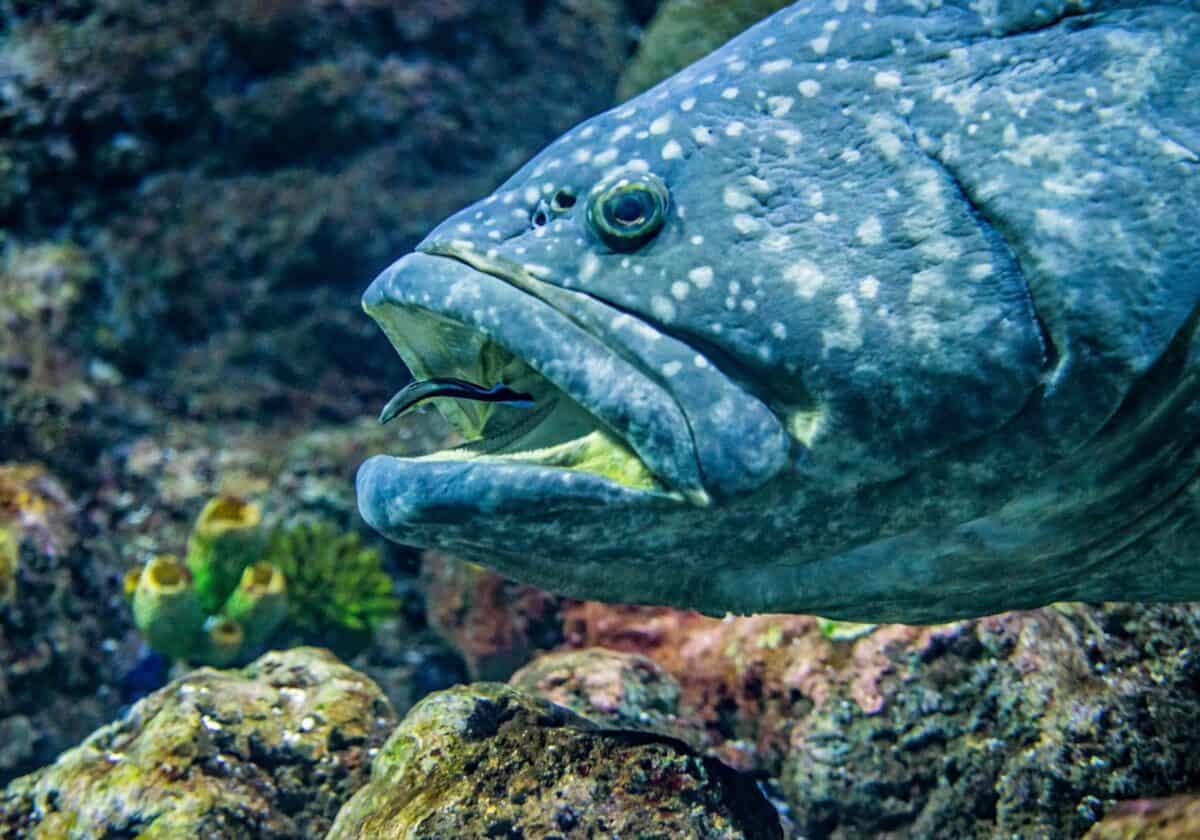
Certain grouper species have demonstrated sophisticated cooperative hunting behaviors that require advanced cognitive abilities. The most documented example involves the coordinated hunting relationship between giant groupers (Epinephelus lanceolatus) and moray eels. When a grouper locates prey hiding in reef crevices inaccessible to them, they will recruit moray eels through specific head-shaking gestures performed in front of the eel’s hiding place. This intentional recruitment of another species as a hunting partner represents one of the few documented cases of interspecies cooperative hunting initiated through communication.
Beyond this remarkable interspecies cooperation, groupers show other signs of advanced cognition. They can recognize individual divers who regularly feed them, approaching them specifically while ignoring others. Some species use coordination when hunting schools of fish, with multiple groupers taking different positions to herd prey. The roving coral grouper (Plectropomus pessuliferus) has been observed using a form of referential gesturing—pointing with its body toward hidden prey to direct moray eels, indicating awareness of another animal’s perspective and knowledge state, a cognitive ability previously thought limited to great apes and a few other mammals.
2. Parrotfish Ecosystem Engineers with Specialized Intelligence

Parrotfish demonstrate specialized intelligence related to their unique ecological role. These fish possess modified teeth fused into strong beaks that allow them to scrape algae from coral and bite off chunks of coral itself. This specialized feeding behavior requires sophisticated spatial memory and learning—they must remember productive feeding areas while avoiding depleted zones, allowing algae time to regrow. Studies have shown they maintain mental maps of their territories and adjust feeding patterns based on resource availability.
Their social intelligence is equally remarkable. Many parrotfish species form complex harems with intricate social hierarchies. When dominant males are removed, the largest female can change sex and assume the male role within days—a process requiring dramatic physiological changes and behavioral adaptations. This sex-changing ability, known as sequential hermaphroditism, demonstrates extraordinary neurological plasticity and adaptability. Additionally, some species engage in cooperative defense against predators and coordinate sleeping behaviors, with groups building protective mucus cocoons together at night. Their feeding behavior creates tons of sand annually (a single parrotfish can produce over 200 pounds of sand per year), making them crucial ecosystem engineers whose cognitive abilities directly shape coral reef environments.
1. Stingrays Tactile Problem Solvers

Stingrays, particularly the spotted eagle ray (Aetobatus narinari) and southern stingray (Hypanus americanus), demonstrate impressive cognitive abilities centered around tactile learning and problem-solving. They possess specialized sensory organs called ampullae of Lorenzini that detect electromagnetic fields produced by prey, allowing them to locate food hidden beneath sand with remarkable precision. This sensory specialization is complemented by sophisticated learning abilities—stingrays quickly learn to associate specific locations with food rewards and can remember these associations for months.
In captivity, stingrays demonstrate impressive problem-solving skills. They can learn to push targets, navigate through hoops, and complete multi-step tasks for food rewards. Researchers have documented their ability to use observational learning—watching and copying behaviors performed by other stingrays. Some species show evidence of tool use, manipulating objects in their environment
Conclusion:

The marine world is teeming with extraordinary examples of intelligence that rival—and in some ways surpass—those of many land-dwelling creatures. From the self-awareness of dolphins and manta rays to the strategic hunting of orcas and groupers, intelligence in the ocean takes many surprising and diverse forms. These cognitive abilities have evolved under unique environmental pressures, giving rise to remarkable behaviors such as problem-solving in octopuses, cultural transmission in humpback whales, and future planning in cuttlefish.
This diversity of intellect reveals that intelligence is not confined to one evolutionary path or brain structure. Whether it’s the massive brains of cetaceans or the distributed nervous systems of cephalopods, marine animals have developed complex ways of thinking, learning, and interacting with their environment and each other. As we deepen our understanding of ocean life, it becomes clear that intelligence is far more widespread—and multifaceted—than once believed, challenging human-centric views of cognition and underscoring the richness of life beneath the waves.
- 10 Animals That Risked Their Lives to Save Humans - August 9, 2025
- 14 Reasons Why Bears Are Afraid of Humans (Most of the Time) - August 9, 2025
- 11 Frogs That Look Too Weird to Be Real - August 9, 2025

